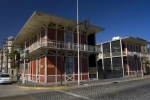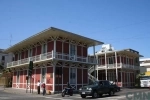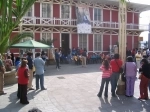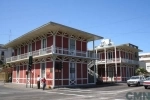




The lack of resources offered to construct a building Mussels of the characteristics required, and the desire to make a work of poise, led to the Chilean authorities to commission the work to the firm Wetmare y Cia., Who the built in Valparaiso, in a modular fashion. In 1868 they moved the prefabricated parts to their destination, which already had built the foundations, arming themselves facing the sea called the House of Intervention Chilena.
Was decided to move the construction of Mejillones Antofagasta, in 1885 after a series of public buildings in that city, "newly incorporated into Chilean territory after the Pacific War, were destroyed by fire. Antofagasta was booming then nitrate, and the building and then move was considered a work of great beauty, which would enhance the city. Undertook the disarmament movement and rearmament, as well as the construction of new foundations, the signature of Don Eduardo Orchard, who performed the task in 1888. From the following year and by 1966 the building housed the local Customs.
Customs Antofagasta is a two-story building in the shape of "U", open to a central courtyard which is the access and circulation, the center of it comes a staircase that splits to both sides, allowing access to the second floor, which is run entirely by a balcony. The building overlooking the sea. The foundation is granite-type stone, the Douglas fir is the material of the overcodified, skies, floors, staircase, railings, brackets, doors and windows. Walls are structured with columns and diagonals of Douglas fir and filled with clay mixed with straw. The roof is of corrugated galvanized iron sheet.
Customs has characteristics of the type of architecture of the north shore that had its most extensive demonstration in the port of Iquique is a wooden architecture is distinguished by the use of elements such as balcony n, double roof, balustrade and trim. This corresponds to the style that flourished in America in the late eighteenth and nineteenth century, based on the "Georgia" and that extends to different places in America because of immigration, speaking on variations according to local conditions.
In 1976, under an agreement between the National Monuments Council and the Department of Architecture of the Ministry of Public Works, the building was restored by the specialist Eduardo Muñoz González, going to host dependencies Regional Museum of the Universidad del Norte, and the regional office of the National Tourism Service.